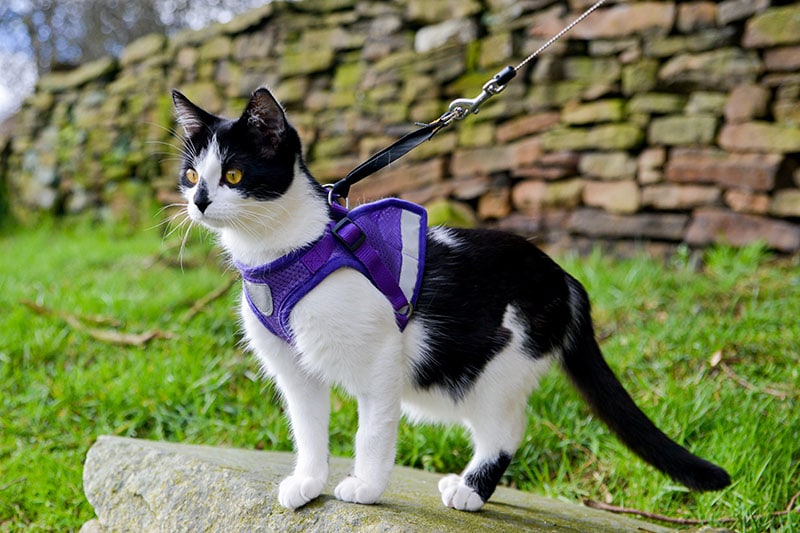VET APPROVED

The information is current and up-to-date in accordance with the latest veterinarian research.
Learn more »Getting your cat used to wearing a harness can be a great way to take them outdoors safely and comfortably without worrying that they will get away or attack another animal. However, cats are known for their independent and sometimes stubborn nature, so getting them used to wearing a harness may take time and patience. If this sounds like your situation, keep reading as we provide several tips and tricks that should help ease the process and improve your chance of success.

The 15 Tips to Get Your Cat Used to a Harness
1. Choose the Right Size Harness
There are many types of cat harnesses on the market, so choose one that fits your cat well and is comfortable for them to wear. Most harness brands will have a size chart, so take the time to measure your cat carefully. If your cat is still a kitten, remember that they will continue to grow, so get a harness that is adjustable.
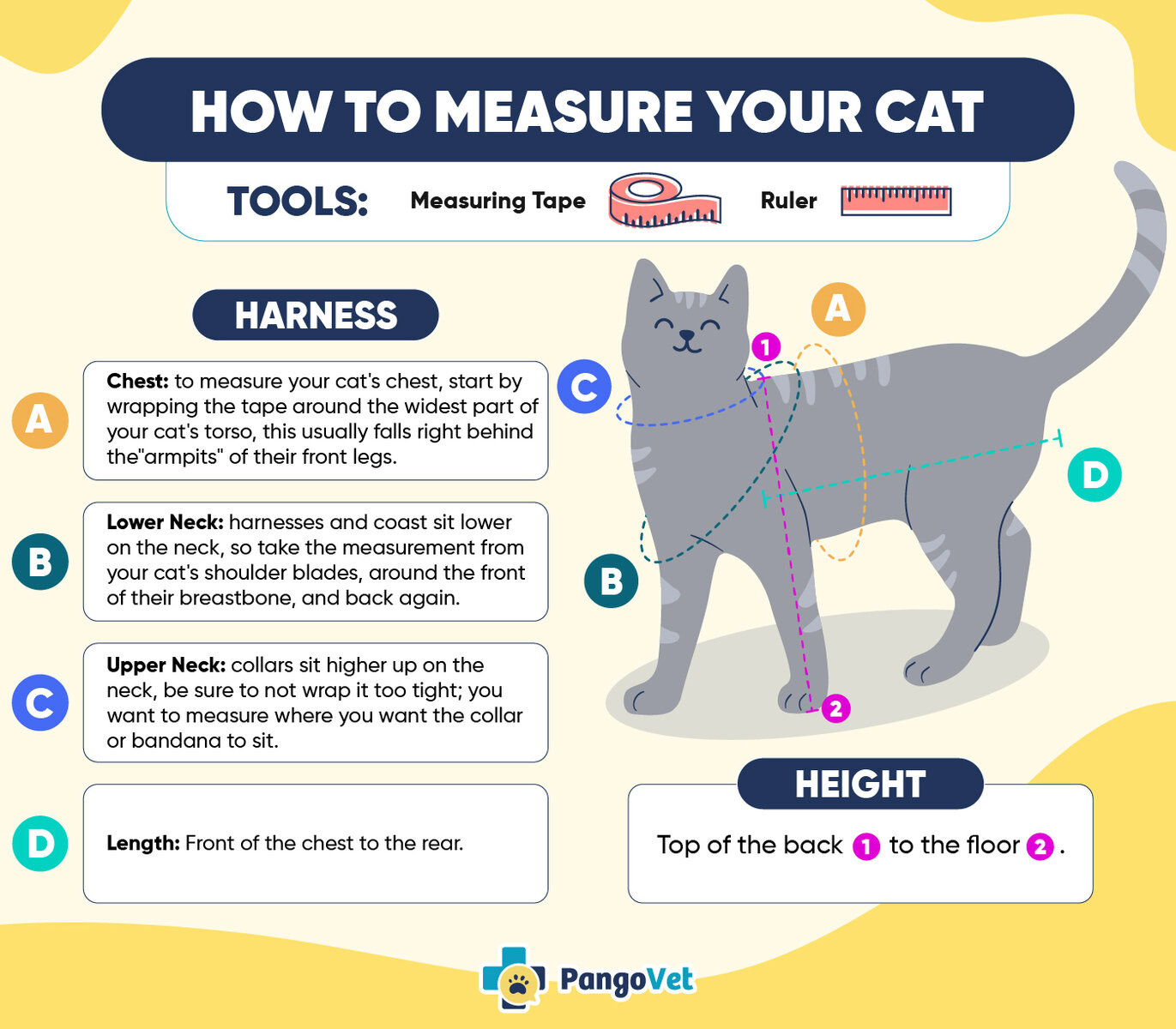
2. Use a Soft and Lightweight Harness
A harness made of soft and lightweight materials, such as nylon or mesh, will help your cat feel comfortable and not weighed down by the harness, and they will be more likely to wear it.
Finding a great cat harness can be tricky. Our favorite is Hepper's Cat Harness & Leash Set, which includes a soft, adjustable velvet harness and a premium climbing rope leash. With safety features like quick-release buckles, reflective stripes, and reinforced stitching, you'll love this machine-washable harness as much as your cat will! At PangoVet, we've admired Hepper for many years, and decided to take a controlling ownership interest so that we could benefit from the outstanding designs of this cool company!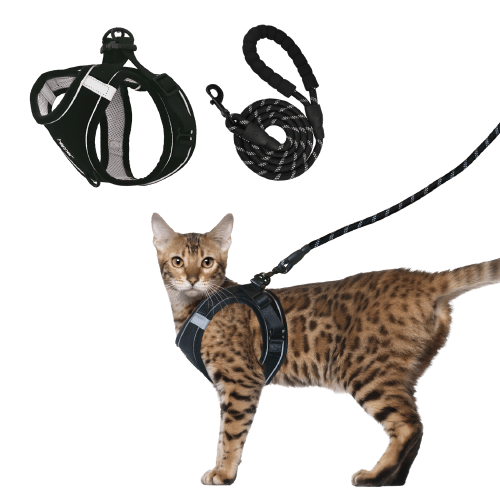
3. Adjust the Fit
Once you choose the right harness for your cat, make sure it fits them properly. Adjust it so it is snug enough that it can’t slip out but not too tight that it’s uncomfortable, restricts movement, or cuts off blood circulation.
4. Start Slowly
Introduce the harness to your cat slowly and in a non-threatening way. Let your cat sniff and investigate it for a day before putting it on them. Cats are sensitive to new smells and will be more accepting of things that smell like home.

5. Use Positive Reinforcement
Reward your cat with treats and praise when they allow you to put the harness on and wear it and when they behave properly outdoors. However, be sure that the treats don’t account for more than 10% of their daily intake, or they could result in weight gain, leading to overweight and related health problems later.
6. Practice Indoors
Before venturing outside, let your cat wear the harness indoors to help them get used to it without the added excitement of being outside. It will take most cats a few tries before they realize that their movement isn’t restricted while wearing the harness, and they usually feel more comfortable after that point.
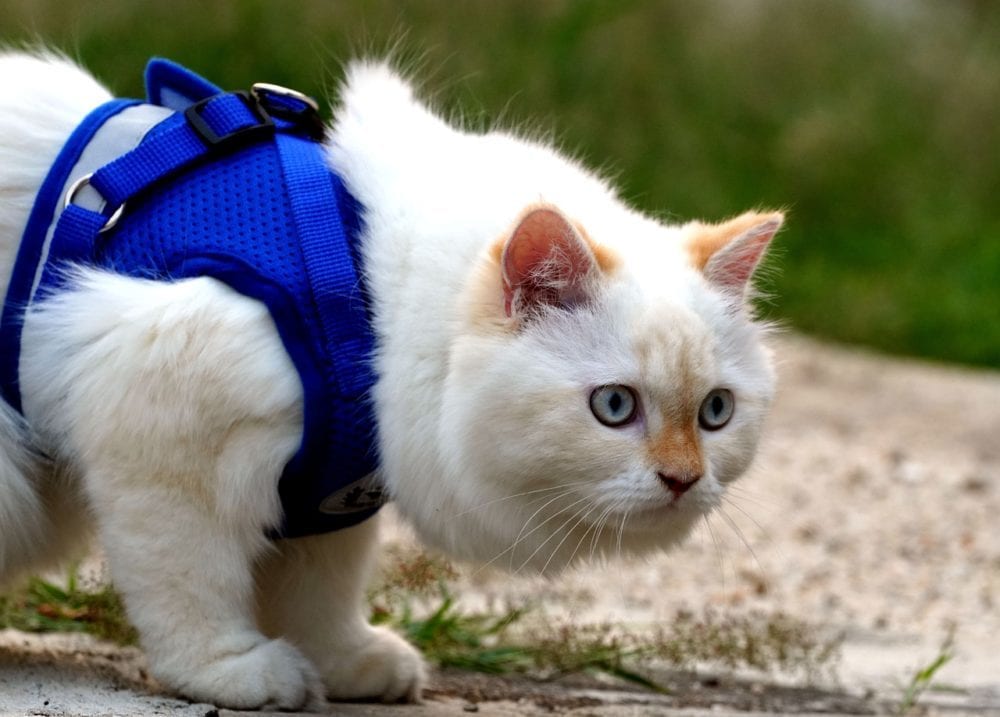
7. Gradually Increase Harness-Wearing Time
Once your cat is comfortable wearing the harness indoors, gradually increase the time that they wear it. We recommend starting with short sessions of 5–10 minutes and increasing the time by intervals of 5 minutes once they seem comfortable. Don’t increase the time too quickly, or you might scare your cat and slow your progress.
8. Use a Leash
Attach a leash to the harness so you can control your cat’s movements and keep them safe while they are wearing it. Choose a leash that gives your cat room to move around a little but is short enough to keep them under control, especially if there are other animals nearby.
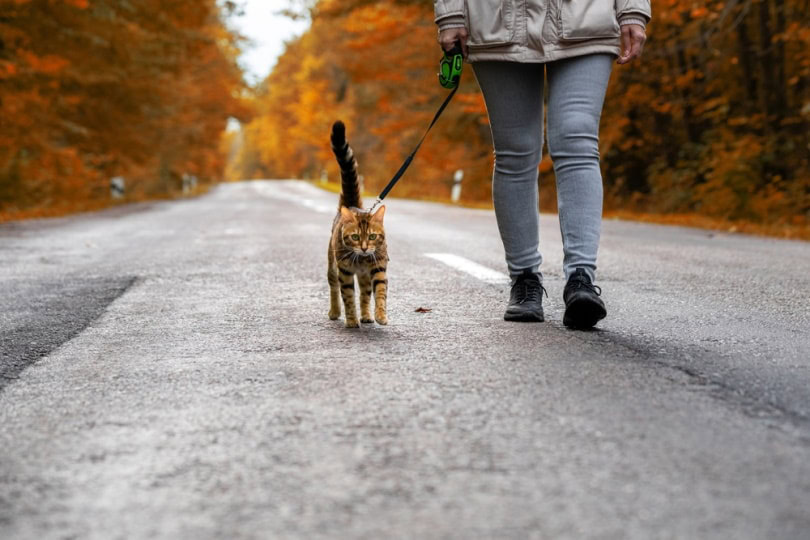
9. Offer Them Treats While Outside
Once your cat is comfortable wearing the harness, you can offer them treats while outside to help convince them to move around and explore the outdoors.
10. Be Patient
Getting your cat used to wearing a harness may take a while, so be patient and consistent with your training. Plan to spend several sessions getting your cat used to the harness.
11. Stay Alert
Be aware of your surroundings and potential hazards that could scare or startle your cat when outside, and avoid loud or crowded areas when possible. Keep a watchful eye on your cat to ensure their safety and comfort, and get them to a safe place if you see any problems.
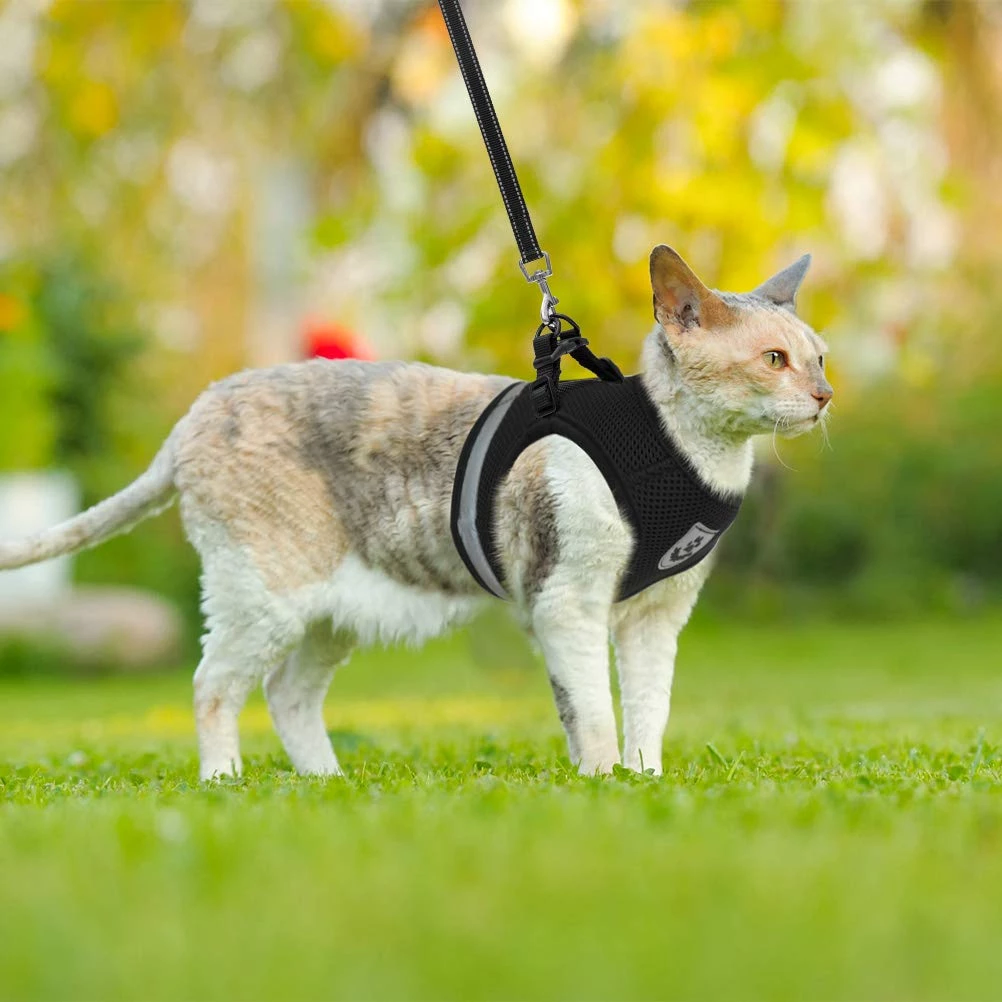
12. Gradually Introduce New Environments
Once your cat is comfortable wearing a harness outside, gradually introduce them to new environments, such as parks or busy streets, to help them become more comfortable with these experiences and surroundings.
13. Start Young
If possible, start training your cat to wear a harness when they are still young. Young cats tend to be more adaptable and may have an easier time getting used to wearing a harness. It can also help get them into a routine that carries into adulthood.
14. Don’t Force It
Don’t force the issue if your cat is resistant to wearing a harness. Instead, take a break and try again later, or consider a different approach to avoid creating stress or anxiety.

15. Make It Fun
Try to make the training process as enjoyable as possible for your cat. Play, offer them treats and praise, and try to make the experience as positive as possible to help your cat see wearing the leash as a positive experience.

Conclusion
To get your cat used to wearing a harness, start slowly, choose the right harness, use positive reinforcement, practice indoors, avoid overstimulation, be patient, and stay alert. By following these tips, cat owners can help their pets become comfortable with wearing a harness and safely enjoy the great outdoors.
Featured Image Credit: Abi’s Photos, Shutterstock
Contents
- The 15 Tips to Get Your Cat Used to a Harness
- 1. Choose the Right Size Harness
- 2. Use a Soft and Lightweight Harness
- 3. Adjust the Fit
- 4. Start Slowly
- 5. Use Positive Reinforcement
- 6. Practice Indoors
- 7. Gradually Increase Harness-Wearing Time
- 8. Use a Leash
- 9. Offer Them Treats While Outside
- 10. Be Patient
- 11. Stay Alert
- 12. Gradually Introduce New Environments
- 13. Start Young
- 14. Don’t Force It
- 15. Make It Fun
- Conclusion
